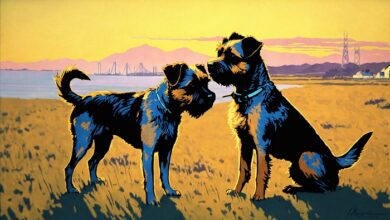Cash Turf: Exploring the Meaning, Culture, and Impact of a Powerful Term in Modern Urban Life

The phrase “Cash Turf” has emerged as a significant term in modern urban culture, particularly within the context of street life, music, and gang affiliations. Cash Turf is often associated with the idea of ownership, control, and influence over a specific area or domain. It implies not just geographic boundaries but also the economic and cultural power that comes with it. While its origin is not universally agreed upon, the term has taken on various meanings in different regions and contexts.
In the world of hip-hop, urban music, and street culture, Cash Turf has become a symbol of power, respect, and survival. The term has crossed over into mainstream culture and is often used in music, particularly in rap and drill genres, to represent not only territory but also the hustle and drive associated with rising above one’s circumstances.
In this blog post, we will explore the meaning of Cash Turf, its significance in contemporary urban culture, its role in music, and how it affects street life. By the end of this article, you’ll have a comprehensive understanding of the Cash Turf phenomenon and its influence on today’s youth and communities.
The Origins of Cash Turf: A Cultural and Street History
The phrase “Cash Turf” likely draws from the combination of two powerful concepts: “cash” (representing money, wealth, and financial gain) and “turf” (representing territory, land, or influence). These two ideas are central to the lives of many in urban environments where survival is often tied to financial resources and control over one’s surroundings.
The origins of the term can be traced back to street gangs and local crews that used the concept of “turf” to signify control over specific areas in a city. In urban environments, owning a piece of turf often meant having access to resources, whether it be through the control of drug distribution, local businesses, or simply having a strong presence in the area. This turf could be literal, like a neighborhood or block, or metaphorical, such as having influence over an entire community.
The concept of “cash” within this context points to the financial gain associated with controlling a particular turf. In many ways, cash becomes the lifeblood of a turf war—those who have the most resources and money often have the upper hand. As such, Cash Turf represents both financial and territorial dominance.
Cash Turf in Hip-Hop Culture
Hip-hop has long been a voice for the marginalized and oppressed, with many of its earliest pioneers hailing from impoverished urban areas where the concept of Cash Turf was highly relevant. In the world of hip-hop, “cash” has often been equated with success and the ability to rise above one’s circumstances, while “turf” represents the streets or communities where one’s influence is felt.
Many rappers, particularly those associated with the drill and trap subgenres, reference Cash Turf as a symbol of success and power. Songs such as “Cash Flow” and “Turf Wars” make direct references to the importance of owning one’s turf and securing financial stability. These themes resonate with young listeners who may be striving to escape from poverty or difficult circumstances. For many artists, gaining recognition and wealth through music is seen as a way to reclaim control of their turf, both metaphorically and literally.
Additionally, Cash Turf in hip-hop often emphasizes loyalty to one’s roots and the community from which an artist hails. The idea of returning to the “turf” after achieving success in the music industry is seen as a form of empowerment and a way to honor one’s origins.
The Role of Cash Turf in the Street Economy
The street economy is often built upon the principles of Cash Turf. In many neighborhoods, control over a specific turf can lead to the ability to generate income, whether through legal or illegal activities. For instance, in areas where gang activity is prevalent, control over turf can mean domination over local drug markets, extortion, or even local businesses.
Cash Turf represents the economic opportunities that arise from controlling certain areas of a city. For many individuals growing up in disadvantaged communities, owning or controlling turf can be seen as a way to gain access to resources that would otherwise be inaccessible. The financial power associated with owning turf provides an avenue for both economic and social mobility, which is why so many are willing to fight for it.
However, the downside of this system is that it often perpetuates cycles of violence and instability. Turf wars over control of certain areas can lead to conflicts between rival groups, resulting in danger and loss of life. In this context, Cash Turf becomes a double-edged sword—while it offers the promise of financial success, it also invites violence and rivalry.
Cash Turf and Its Relationship with Gang Culture
Gang culture and Cash Turf are deeply intertwined. Many gangs operate based on the concept of territorial control, and Cash Turf becomes a crucial element in this dynamic. In gang culture, turf wars are common, as groups fight for control over specific areas to profit from the street economy. The phrase “Cash Turf” encapsulates this struggle for financial gain, where the control of territory often determines access to power and resources.
The dynamics of gang culture often revolve around loyalty, respect, and the ability to assert dominance over a certain area. In this context, Cash Turf is not just about physical control but also about establishing authority and ensuring that rivals understand one’s power. It is common for gang members to protect their turf fiercely, even if it involves violence or intimidation.
This connection between Cash Turf and gang culture is often explored in drill music, where the struggles for dominance and financial success are portrayed as part of the broader narrative of survival. In many drill songs, artists describe their experiences with turf wars, rival gangs, and the constant hustle to make money. Cash Turf, in this sense, becomes a symbol of the broader socio-economic challenges faced by those living in gang-controlled neighborhoods.
Cash Turf and Its Influence on Today’s Youth
The concept of Cash Turf continues to have a profound influence on today’s youth, particularly in urban areas where opportunities for success may seem limited. For many young people, the idea of controlling their turf and accumulating cash represents a way to escape poverty and achieve success. In this context, Cash Turf becomes more than just a term—it becomes a lifestyle and a symbol of aspiration.
Unfortunately, the emphasis on Cash Turf can also lead to negative outcomes. The desire for financial success and territorial control can drive individuals into dangerous activities, such as drug dealing, robbery, or other illegal actions. This often results in a cycle of violence and incarceration, as young people become trapped in a system that rewards the pursuit of wealth at any cost.
Hip-hop and drill music, which are heavily influenced by the concept of Cash Turf, often highlight the harsh realities of this lifestyle. While the music can be a powerful expression of struggle, it also serves as a cautionary tale for those who may be tempted by the allure of quick wealth and the power associated with controlling turf. The impact of Cash Turf on today’s youth is complex—it represents both opportunity and danger.
Cash Turf and Its Representation in Pop Culture
Outside of the street and music scenes, the term “Cash Turf” has found its way into broader pop culture. Movies, TV shows, and social media influencers often reference Cash Turf as part of the narrative surrounding success and power. It has become a shorthand for financial independence, dominance, and control.
In films about gang life, crime, and urban struggles, Cash Turf is often depicted as something worth fighting for, even if it comes at a personal cost. Characters in these films typically battle for control over their turf, with cash being both the reward and the motivation behind the conflict. These depictions influence how young people view money, success, and territoriality, often romanticizing the idea of “owning the turf.”
In the world of social media, influencers and entrepreneurs may also use the concept of Cash Turf metaphorically to discuss ownership in business or personal life. The term is sometimes employed to represent the idea of building a brand or establishing dominance in a particular market, whether that be in fashion, music, or digital content creation.
The Dark Side of Cash Turf: Violence and Crime
As much as Cash Turf can represent success and empowerment, it also has a dark side. The pursuit of control over turf often leads to violence and crime. Turf wars, particularly in neighborhoods controlled by gangs, can result in deadly consequences. The constant struggle to maintain or expand one’s turf can result in shootings, robberies, and other violent acts.
The rise of drill music, which often glamorizes the concept of Cash Turf, has also been criticized for its role in perpetuating violence. While many artists use their music to express the realities of their lives and the struggles they face, the portrayal of Cash Turf as something worth fighting for has led to some questioning whether these messages encourage violence in vulnerable communities.
Ultimately, the concept of Cash Turf highlights the complex intersection between wealth, power, and violence in urban communities. While it can symbolize success and empowerment, it also underscores the dangers that come with striving for dominance in areas where resources are limited and competition is fierce.
Conclusion
Cash Turf represents more than just territorial control—it encapsulates the struggle for power, financial gain, and respect in urban environments. From its origins in gang culture to its portrayal in hip-hop and drill music, Cash Turf has become a symbol of both aspiration and danger.
While it can signify success, control, and financial independence, it also highlights the dark realities of street life and the violence that often accompanies the pursuit of power. In many ways, Cash Turf reflects the complexities of modern urban culture, where survival and success are inextricably linked to both personal ambition and the ability to navigate a world filled with competition and danger.
For young people growing up in urban communities, the idea of Cash Turf can be both motivating and perilous. It serves as a reminder of the challenges they face and the choices they must make in order to succeed. As we reflect on the concept of Cash Turf, we must recognize its multifaceted nature—offering both hope and hardship in the pursuit of success.
FAQs
-
What does “Cash Turf” mean? Cash Turf refers to the combination of financial success (“cash”) and territorial control (“turf”). It represents dominance, influence, and the ability to control an area or community.
-
How is Cash Turf related to gang culture? In gang culture, Cash Turf is about controlling a specific area and profiting from it, whether through legal or illegal activities. Gangs often fight for turf in order to gain power and financial control.
-
How does Cash Turf influence hip-hop music? Cash Turf is a central theme in hip-hop and drill music, where artists often reference their rise to power and the struggle for control over their neighborhoods. It symbolizes both financial success and the difficulties of surviving in harsh environments.
-
Is Cash Turf a positive or negative concept? Cash Turf can be seen as both positive and negative. On one hand, it represents success and empowerment. On the other hand, it often leads to violence and crime, especially when individuals compete for control over limited resources.
-
How has Cash Turf impacted youth culture? Cash Turf has a significant influence on youth culture, especially in urban areas. It represents the aspiration for success and control, but it can also encourage risky behaviors and lead to cycles of violence and poverty.




